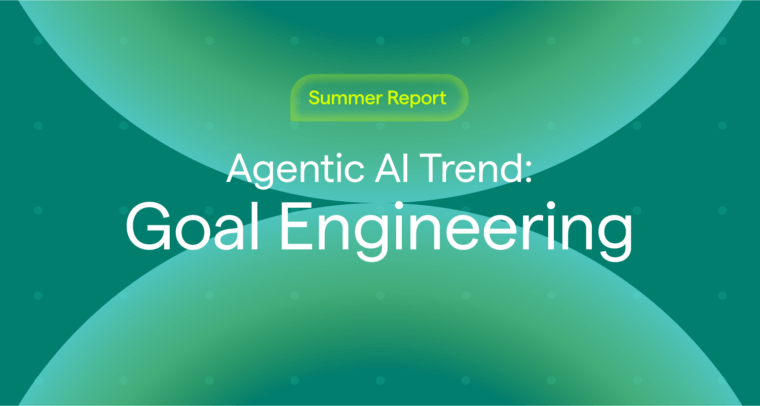
Piloting AI was an essential step in every business’s adoption story. Now, we enter the next chapter: demonstrating business impact. Pilots and experimentation are necessary, but without an effective way to assess return on investment (ROI), they don’t inform priorities or guide investment. As businesses prepare for 2025, it’s time to focus on developing a clear picture of success with AI and quantifying that success in terms of ROI.
The importance of understanding how to measure and scale the value of AI initiatives can’t be overstated. Businesses that master this will be able to:
- Capture the immediate productivity gains promised by AI across the enterprise
- Operationalize ROI assessment to swiftly scale what is working and stop what isn’t
- Use the insights from early wins to inform more transformative opportunities
- Gain increased investment to accelerate the impact of these opportunities
Free your business from pilot purgatory
AI is here to stay, but many businesses are stuck in the experimentation phase. Deloitte reports that most organizations have moved fewer than one-third of their generative AI experiments into production. Bain has found that even as companies increase their pilots for almost every use case, fewer and fewer of these projects are moving beyond the pilot stage.
My take: It’s not an issue of value from these pilots but an issue of trust—trust in AI systems to accurately quantify the impact of these projects against traditional business KPIs. This measurable evidence is the key to moving forward with AI, with the full confidence of the board, executive leadership, and the organization as a whole.
![]() Deconstruct ROI for your business
Deconstruct ROI for your business
Quantifying the ROI of AI gives businesses the confidence to continue investing in the initiatives with the most immediate impact and the greatest potential for seismic business transformation. To do this, I urge business leaders to define value for their organization beyond subjective or qualitative terms like “productivity.” This includes identifying exactly how an AI impact translates into established success measures that matter to your business, like CSAT, NPS, brand reputation, revenue, and so on.
Grammarly builds AI technology and we adopt many AI tools, similar to what any other company does. To define ROI, we identified four categories of measurement––three of which are leading indicators and one assessing bottom-line impact. Together, these categories focus AI assessment on business impact while validating that the impact is sustainable and scalable. I believe this comprehensive yet practical framework can help any company move from qualitative to quantitative impact.
Leading indicators:
- Compliance: This is a simple go/no-go decision. If AI does not meet security standards, the tools or initiative should be rejected.
- Quality: Does the AI output, whether content, imagery, video, or analysis, meet employee and business trust expectations? If the output quality is insufficient, can tools be trained to improve it? If not, the tools or initiative should be rejected.
- Employee experience: Does the AI solution fit into employee workflows or provide a better way of working? If AI solutions are forced, initial excitement typically turns into disillusionment and abandonment.
Bottom-line impact:
- Impact: The first three measures determine whether it’s even worth your time to assess the impact on business goals. If an initiative has cleared each of those hurdles, you can begin to assess whether enhanced activity is leading to improvements across your core business KPIs. The metrics you choose to evaluate here should align with the AI use case and one of your core business metrics like CSAT, NPS, deal size/volume, or brand reputation.
For example, at Grammarly, customer satisfaction is critical to our lifetime customer value and churn rates. We run A/B tests across customer-facing teams with different access to AI tools to stay laser-focused on how AI quality and employee experience impact CSAT.
My ROI checklist
The time for open-checkbook experimentation is over. To drive real impact, we must move quickly to develop a clear playbook for measuring and scaling AI outcomes. Here’s what to focus on:
- Build an AI ROI assessment framework: Whether based on the four categories above or others tailored to your business, a clear framework is essential to make objective, data-backed decisions about AI initiatives at the speed of technology innovation and competitor evolution.
- Leverage built-in vendor ROI capabilities: To accelerate your assessment process, complement your own homegrown framework by selecting tools with built-in ROI measurement capabilities. For example, Grammarly generates Effective Communication Score and ROI reports based on data points measuring usage, communication performance, gaps, and brand compliance.
- Target immediate productivity gains and long-term business transformation: Early ROI is necessary to build momentum, but the key to success is using the insights from those gains to uncover more transformational change—and ensure the investment and runway needed to execute it.
- Embrace continuous assessment: A tool may not be mature enough to drive its promised impact today—but that can change quickly. A deployment delivering middling value now might show an exponential burst as new use cases are discovered. By continuously iterating and assessing your AI tools and use cases, you can cut through the clutter of AI promises and double down on what’s working.
- Identify AI power users and use cases: Understanding AI usage and use cases can help determine if the value of an AI implementation will scale. AI power users—employees who are driving exponential value in their AI use—signal what effective AI use looks like in your organization. They can help uncover novel AI use cases and accelerate workforce AI adoption.
For businesses actively implementing AI, it’s time to quantify value. With clear measures of success and a solid framework, we can confidently move out of the AI pilot phase and into scalable initiatives that deliver real business impact.
Gain even more insights into the trends that matter and get actionable steps to prepare your organization in our latest report, 2025 AI Shortlist: 3 Trends to Prioritize in Your Annual Strategy.







